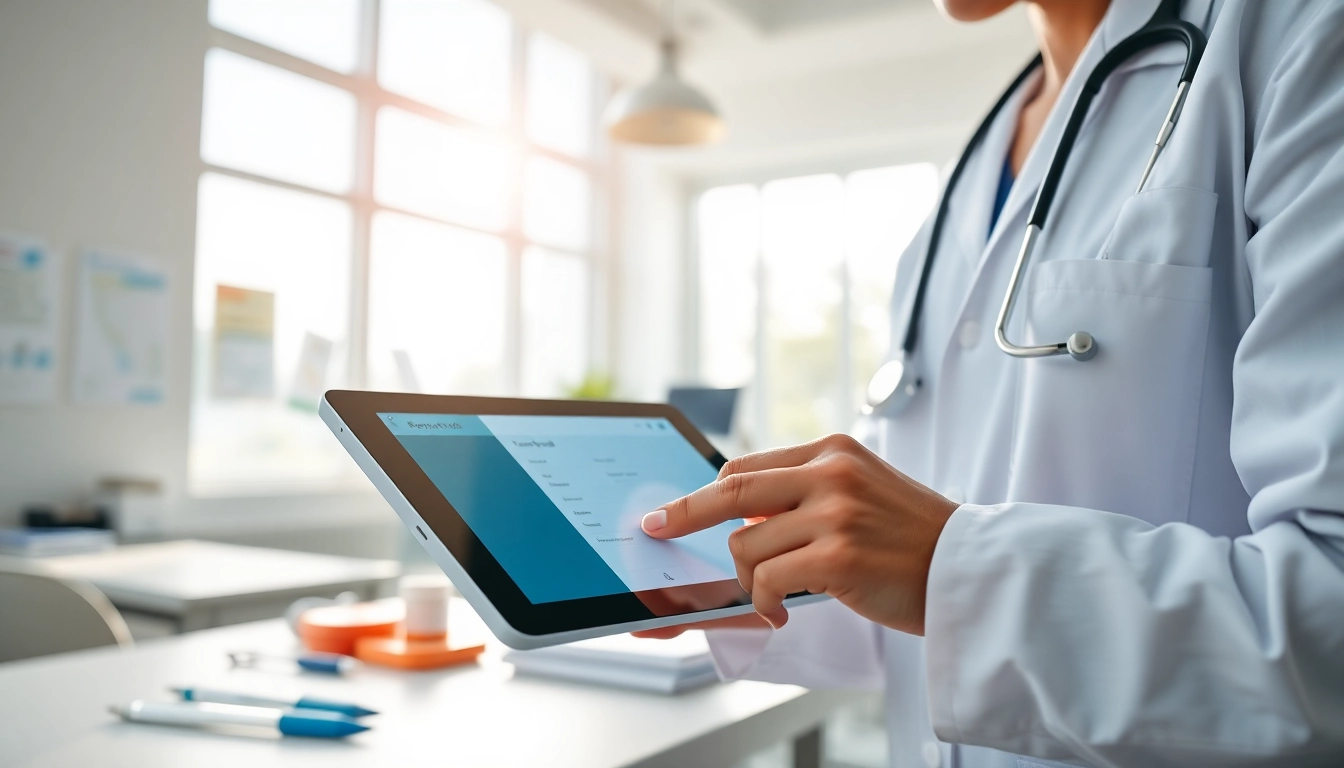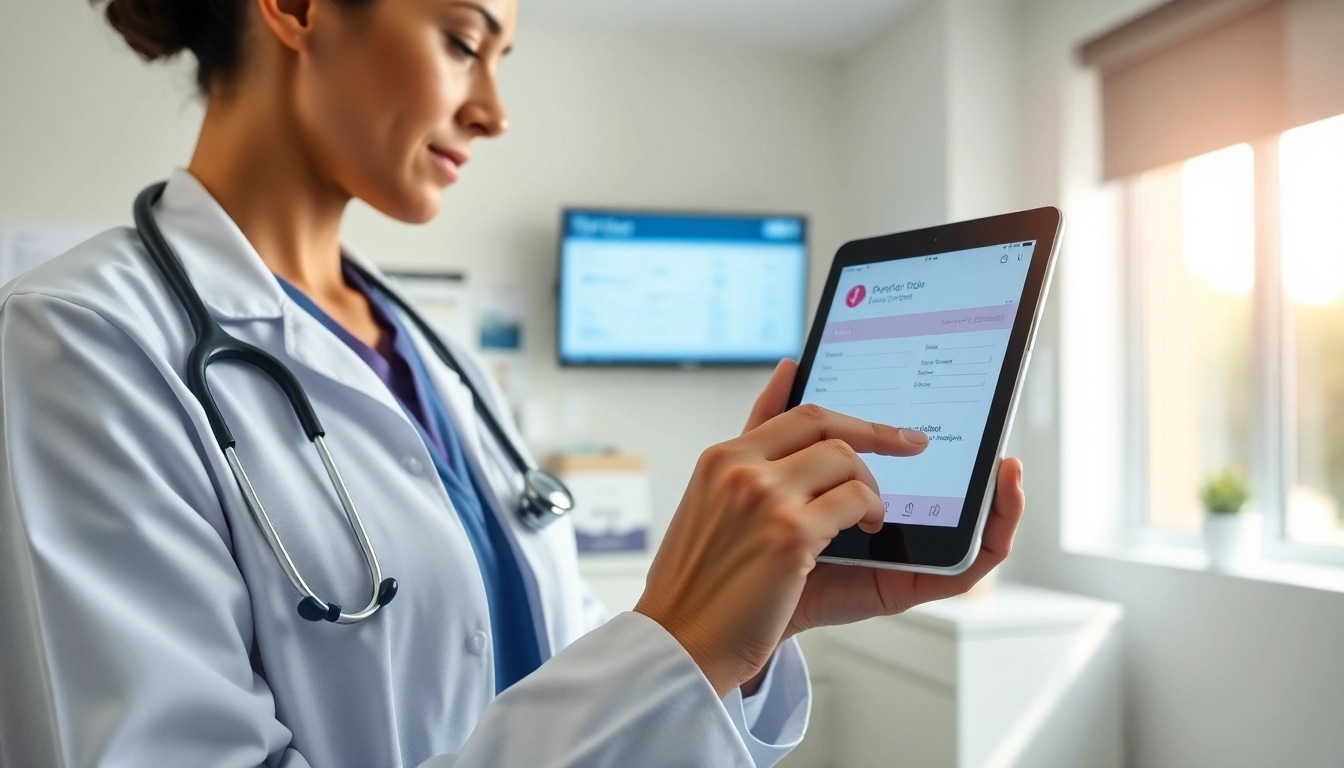Understanding Free Eprescription Apps
In today’s digital age, the healthcare landscape is rapidly evolving, and the advent of technology has made significant strides in improving the efficiency of medical practices. At the forefront of this innovation is the use of free eprescription apps, which streamline the process of prescribing medications for healthcare professionals. Eprescribing technology simplifies the daunting task of managing prescriptions, enhancing patient safety and healthcare efficiency.
Definition and Overview of Eprescription Technology
Eprescription technology enables healthcare providers to generate and send prescriptions electronically to pharmacies, moving away from the traditional pen-and-paper method. This shift not only reduces the likelihood of errors caused by illegible handwriting but also ensures that prescriptions are transmitted in a timely manner. Eprescribing systems provide a comprehensive framework that integrates prescription management with other healthcare applications, facilitating seamless communication between providers, pharmacies, and patients.
Benefits of Using Free Eprescription Apps
The advantages of adopting free eprescription apps are numerous, and they extend beyond mere convenience:
- Improved Patient Safety: Eprescribing minimizes the risk of prescription errors related to illegible handwriting and provides automatic checks for drug interactions, allergies, and duplicate therapies.
- Enhanced Efficiency: By allowing practitioners to write and renew prescriptions from any location, these apps save valuable time that can be dedicated to patient care.
- Cost Savings: Many free eprescription apps eliminate the need for expensive software, reducing operational costs for healthcare providers.
- Increased Patient Compliance: Patients are more likely to adhere to their medication regimens when prescriptions are readily accessible and can be transferred directly to their preferred pharmacies.
- Data Management: Many eprescribing solutions offer integrated features for managing patient data, improving documentation and follow-up processes.
Key Features to Look For
Choosing the right free eprescription app requires careful consideration of several key features:
- User-Friendly Interface: A straightforward interface is essential for ease of use, allowing healthcare providers to navigate the app intuitively.
- Compatibility: The app should seamlessly integrate with existing electronic health record (EHR) systems to enhance workflow and data accuracy.
- Regulatory Compliance: Ensure that the app complies with all relevant healthcare regulations, including HIPAA, to protect patient information.
- Pharmacy Network: The app should support a wide range of pharmacies to ensure patients have various options for fulfilling their prescriptions.
- Reporting and Analytics: Look for apps that provide reporting tools for monitoring prescribing patterns, patient outcomes, and overall app performance.
Choosing the Right Free Eprescription App
Factors to Consider: Usability and Compliance
When selecting a free eprescription app, usability and compliance should be primary considerations. A user-friendly app allows healthcare providers to manage prescriptions efficiently without extensive training. Furthermore, compliance with healthcare regulations ensures that patient data remains secure and that the practices adhere to industry standards.
Evaluating App Security and Patient Data Protection
Security is a critical factor in healthcare technology. A reliable free eprescription app should have robust security measures, such as data encryption, secure user authentication, and frequent software updates. These features help protect sensitive patient information from breaches and cyber threats. Conduct comprehensive research on the app’s security protocols before integration.
Integrating Eprescription Apps with Existing Systems
Seamless integration is key to maximizing the benefits of free eprescription apps. The selected app should easily interface with current healthcare systems, such as EHRs and billing platforms, to avoid disruptions in workflow and ensure comprehensive data management. Evaluate the app’s compatibility with existing systems to facilitate a smooth transition.
Implementing Free Eprescription Apps in Your Practice
Step-by-Step Guide for Setup and Training
Implementing a new eprescription app requires careful planning and execution. Follow these steps to ensure success:
- Assessment: Evaluate current prescribing practices and identify areas for improvement through the introduction of eprescribing technology.
- Selection: Choose a free eprescription app that aligns with your practice’s needs, taking into account usability, security, and compatibility.
- Setup: Follow the app’s guidelines for installation and configuration, integrating it with existing systems as needed.
- Training: Conduct thorough training for all staff members who will use the app, ensuring they understand its features and best practices for use.
- Monitoring: After implementation, monitor the app’s performance and gather feedback from users to make necessary adjustments.
Best Practices for Transitioning to Digital Prescribing
Transitioning to digital prescribing can be challenging. By implementing best practices, healthcare providers can facilitate a smoother transition:
- Communicate Changes: Keep staff informed about the transition and the benefits of using an eprescribing app to ease concerns and resistance.
- Start Gradually: Introduce the app in phases, allowing users to become accustomed to the new system while still using traditional methods as a fallback.
- Encourage Feedback: Promote an open environment for feedback and suggestions from staff to improve app usage and resolve concerns promptly.
- Utilize Support: Take advantage of vendor support and training resources to enhance staff proficiency and address any challenges that arise.
Potential Challenges and How to Overcome Them
While the transition to eprescribing apps presents many benefits, it may also come with challenges such as resistance from staff, integration issues, and patient pushback. Overcome these challenges by:
- Providing Comprehensive Training: Ensuring staff are well-equipped to use the new technology can ease anxieties and build confidence.
- Engaging Patients: Educating patients on the benefits of electronic prescriptions can mitigate fears related to the change and foster compliance.
- Regular Check-ins: Frequently assess the app’s performance and user satisfaction to make timely improvements and adjust workflows as necessary.
Measuring the Impact of Free Eprescription Apps
Tracking Prescribing Efficiency and Patient Outcomes
Measuring the success of free eprescription apps is crucial for ensuring they meet the intended objectives. Track key performance indicators (KPIs) such as:
- Prescription turnaround times.
- The rate of prescribing errors.
- Patient adherence to prescribed treatments.
- Overall patient satisfaction with the prescribing process.
Analyzing Cost Savings and Time Management
Track the financial impact of implementing an eprescribing app by analyzing cost savings associated with decreased paper usage, reduced administrative workload, and lower error rates, which can reduce malpractice risks. Assess time management improvements by measuring staff productivity before and after introducing the app.
Receiving Feedback from Healthcare Teams and Patients
Feedback from both staff and patients is invaluable in determining the impact of eprescribing technology. Regular surveys and feedback sessions can provide insights into the app’s usability and effectiveness. Use this feedback to fine-tune practices, improve the patient experience, and address any persistent issues.
The Future of Free Eprescription Apps
Upcoming Trends and Features in E-prescribing Technology
As technology continues to evolve, so too will free eprescription apps. Anticipate the following trends:
- Artificial Intelligence: Integrating AI capabilities to enhance decision-making through predictive analytics and personalized care recommendations is on the rise.
- Mobile Accessibility: With the increasing popularity of mobile health applications, expect more apps to focus on mobile functionality for prescribers and patients.
- Interoperability: The demand for integration across healthcare systems will drive innovations aimed at ensuring seamless data exchange between providers, pharmacies, and patients.
- Telehealth Integration: The synergy between telemedicine and e-prescribing will become more pronounced as healthcare systems work toward comprehensive remote care delivery.
Predicting Changes in Regulatory Compliance
As the healthcare environment evolves, so do regulatory frameworks. Providers must stay informed about changes in pharmacy laws, data security regulations, and compliance standards. Regular education on compliance requirements will ensure that practices are not only meeting regulations but also enhancing patient trust and safety.
The Role of Telemedicine in E-prescribing Growth
Telemedicine’s exponential growth during recent years has propelled the adoption of e-prescribing technology. The synergy between remote consultations and digital prescriptions enhances convenience for both patients and providers, paving the way for integrated healthcare delivery models. As telemedicine continues to expand, expect e-prescribing to play a fundamental role in creating efficient, accessible patient care across demographics.



